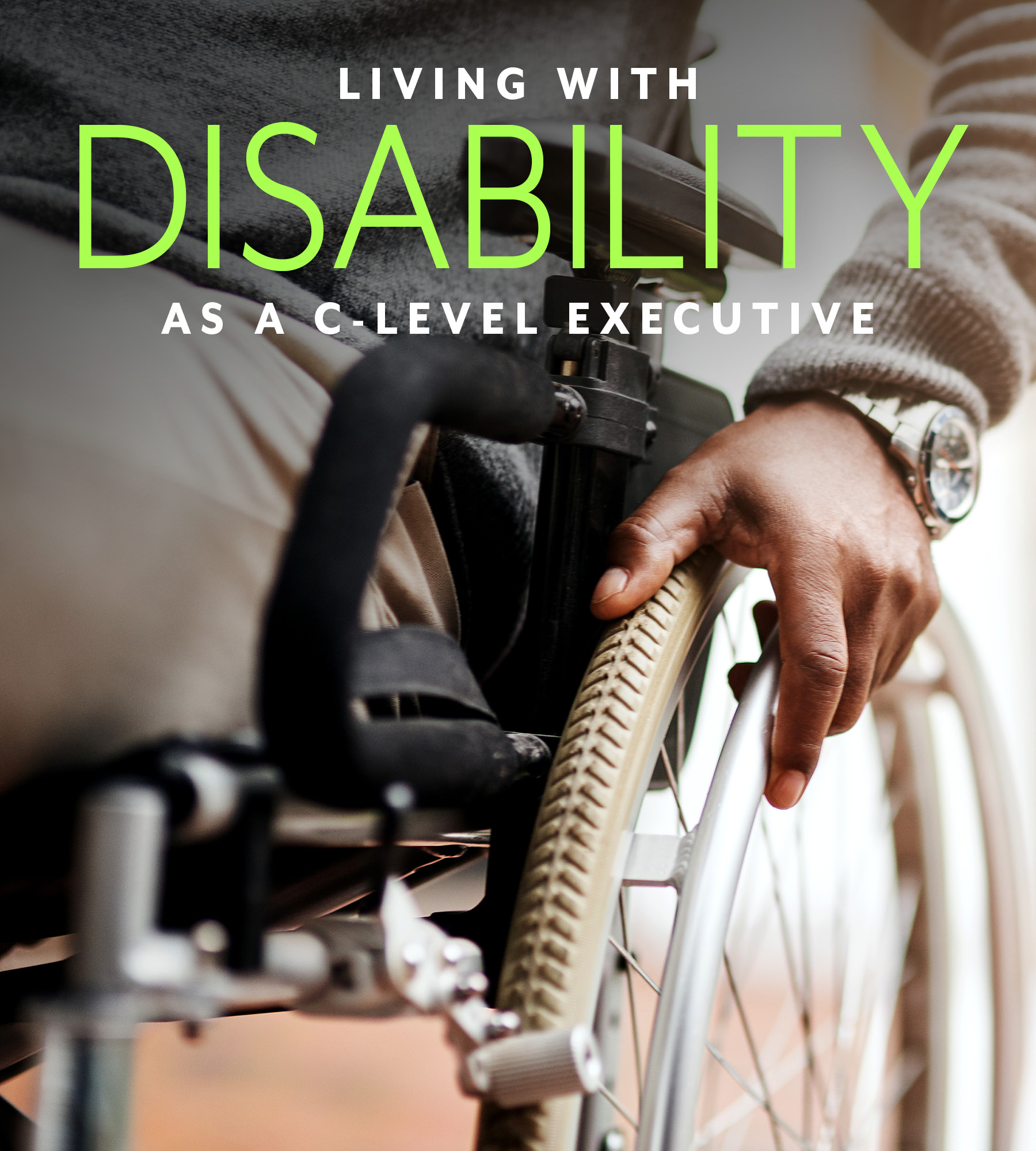Language
You can read the magazine in one of the following languages
In 2001, my life took an unexpected turn. An accident, which fractured my fifth cervical vertebra, resulted in me living with quadriplegia and I suddenly found myself navigating a world that was not designed with my needs in mind. Simple tasks became monumental challenges, and I was faced with barriers at every turn.
For some individuals, it can be a daunting journey to transition back into the same job – or into a new career, for those unable to continue in their previous roles – due to their disability. Those returning to their former positions often experience a sense of relief mixed with apprehension as they navigate their roles with newfound physical limitations.
However, for others facing the reality that they can no longer perform their previous job duties, the transition signifies a pivotal moment of revaluation and adaptation.
Before my accident, I was working as an indoor rock-climbing instructor and was studying to be a secondary school physical education teacher. After my accident, I was told by my university I was no longer eligible to complete my degree.

Navigating one’s career with a physical disability poses unique challenges that are often overlooked.
This was devastating at the time, as everything I had worked towards was now out of reach. But I have been able to change my trajectory and change the path of others who may follow me, by advocating for accessibility in the workplace throughout my career, particularly now as a COO.
Working as a Senior Advisor for access and advocacy at Spinal Life Australia, a charity providing advocacy, specialist therapy and support for people with spinal cord injuries or other physical disabilities, I was provided a platform to use my personal experience to advise organizations, including our own, on how to support people in the ways that matter most to the individuals.

I’ve now been appointed to a new role of COO at Sporting Wheelies, which provides opportunities for people of all abilities to enjoy recreational activities and sports. This role allows me to advocate for more inclusive communities and ensure people living with disability are not held back from activities that give them joy.
Navigating one’s career with a physical disability poses unique challenges that are often overlooked. The complexities that come with wanting to excel in your career, yet needing more flexibility to be able to do so, varies drastically based on the requirements of the job itself.
Yet there are some key themes that all workplaces will benefit from being aware of. Now in my role as a C-suite executive, I’m looking back on my career to provide insight into the barriers I have faced and share advice on how to overcome them.
When you have a disability, everything and every day is a little bit harder. Sometimes a lot harder. One of the most significant challenges I have faced in multiple workplaces throughout my career is the lack of accessibility.
Not all buildings are equipped with ramps or elevators, and even when buildings are technically accessible, they may not be designed with the needs of wheelchair users in mind. Narrow doorways, high counters, inaccessible bathrooms, even inaccessible office furniture are just a few examples of the physical barriers that wheelchair users face on a regular basis, making it difficult to access certain areas.
There are stereotypes, misconceptions, stigmas – whatever you want to call them – that exist out there in the workplace where employers have doubts or reservations about someone with disability and their ability to do their job.
Throughout my career, as an employee with a disability, I have felt I had something to prove. However, I have now been lucky enough to build a career in a space that understands the challenges and therefore have had extremely supportive colleagues and managers. Sadly, not everyone has that experience.
Despite what people might think, there is still a stigma attached to living with a disability and it’s easy for employers to write you off and view employing you as ‘too hard’.
Concerningly, more than two-in-five working-age people with a disability, who have experienced discrimination in the previous 12 months, report their employer as the most likely source (40%), followed by their work colleagues (35%).
The fact that such a significant proportion of discrimination originates from within the workplace itself is particularly troubling. The workplace should be a space where individuals are treated with dignity and respect, regardless of their background or abilities. Yet for many people with disabilities, this is not the reality they face.

There is still a stigma attached to living with a disability and it’s easy for employers to write you off and view employing you as ‘too hard’.
According to the Australian Institute of Health and Welfare, Australians with a disability are twice as likely to be unemployed as those without a disability and sadly are more likely to face longer periods of unemployment.
Hiring someone with a disability is not only the right thing to do, but it also has business benefits. It enhances the service that a business can provide to customers and puts forward a unique perspective to others.
Navigating through a day with physical disabilities demands meticulous planning and a dose of patience. For work events, such as meetings, running errands and work outings, this preparation is so vital for those living with disability. Tasks that others may take for granted, such as arriving at a destination or carrying certain items, can often need additional planning and preparation.
Not being able to meet colleagues’ or managers’ expectations due to something out of your control can provoke stress and discouragement if not addressed with understanding and consideration.

If you’re a business owner and you’re not accessing this significant portion of the population, you’re missing out on an untapped recruitment pool for your business.
For individuals with physical disabilities, attending events often entails a series of special measures, with each aspect, from transportation to accessibility at the venue, requiring careful consideration. Patience becomes a virtue not only for the employee with disabilities but also for those organizing the event and those accompanying them. Time is needed to ensure that ramps are in place, elevators are functioning, and designated parking spots are available.
Scheduling also becomes a consideration. Often, a morning routine for someone with physical disability can take hours. For me, the morning routine can take up to four hours – not every day, but frequently. This means I’ve gone through a four-hour process just to get out the door.
Add to that the commute, a full workday, and an evening routine that gets you back into bed, with family commitments in between, it makes for a very long day. Breakfast meetings or other early starts, while I make every effort to be there, make the day just that little bit harder and the resultant early morning makes it that little bit longer, as it means a 3am rise instead of getting up at 5am.
We know that approximately one-in-five Australians live with a disability. If you’re a business owner and you’re not accessing this significant portion of the population, you’re missing out on an untapped recruitment pool for your business.
Making this shift isn’t always about physical accommodations; often, all that is required is a change in mindset and a commitment to inclusivity at all levels of an organization. This is where the importance of leadership comes into play.
Employing someone with a disability and bringing them into your workforce adds such a great deal of benefit to the workplace that it far outweighs any difficulties that might be perceived by an employer.
Diverse teams are generally more innovative and successful, with accelerated problem-solving perspectives, increased learning opportunities and enhanced morale all playing a role.
Meaningful change in the workplace ultimately comes from the top down. It is up to leaders within an organization to ‘set the tone’ for inclusivity and to create a culture where people with disabilities are valued and respected.
Fortunately, there are signs that progress is being made. There are companies across Australia, and globally, beginning to recognize the importance of diversity and inclusion, and they are taking steps to make their workplaces more accessible to people with disabilities.

It is up to leaders within an organization to ‘set the tone’ for inclusivity and to create a culture where people with disabilities are valued and respected.
From implementing flexible work arrangements to providing accommodations such as assistive technology, there are many ways that employers can create a more inclusive work environment.
In order to truly create a more inclusive workplace, we must continue to advocate for change at all levels of society. This means not only addressing physical barriers but also challenging the attitudes and assumptions that perpetuate discrimination against people with disabilities.
It means holding our leaders accountable and demanding that they prioritize accessibility and inclusion in their organizations.
It’s vital to put attitude shifts into action, and we encourage leaders and executives across Australia to partake in the annual CEO Wheelie Challenge where you spend a day in a wheelchair within your workplace. This challenge seeks to spark a broader conversation on fostering more diverse, inclusive and accessible workplace environments for people with disabilities.
We’re calling upon CEOs, executives, and leaders nationwide to register for the CEO Wheelie Challenge on 30 August 2024 to experience the daily challenges faced by wheelchair users, gain a first-hand insight into what it may be like to have a disability and identify areas for improvement in their business.
It is up to all of us to work together to create a world where everyone, regardless of ability, has the opportunity to thrive.

Dane Cross
Contributor Collective Member
Dane Cross’ experiences living with spinal cord damage (quadriplegia), combined with his qualifications as an Access Consultant, have given him a unique insight into what it means to provide ‘good access’. He is COO at Sporting Wheelies, Queensland’s leading provider of inclusive sports, recreation and rehabilitation therapy, and is passionate about fostering a culture that embraces differences and celebrates diversity. Dane currently sits on several transport committees. For more information visit https://www.sportingwheelies.org.au/
